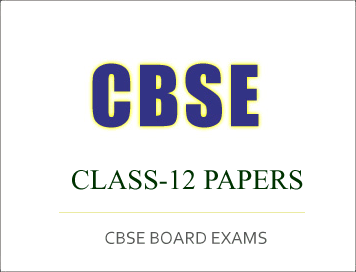CBSE Class-12 Question Papers for IOP/Comptt Examination 2017 : All India Scheme, Commercial Art
Disclaimer: This website is NOT associated with CBSE, for official website of CBSE visit - www.cbse.gov.in

CBSE Class-12 Question Papers for IOP/Comptt Examination 2017 :
All India Scheme, Commercial Art
CBSE Class-12 Question Papers for IOP/Comptt Examination 2017 : Commercial Art
COMMERCIAL ART (Theory)
(HISTORY OF INDIAN ART)
Time allowed : 2 hours
Maximum Marks : 40
General Instructions :
(i) All the eight questions are compulsory, which carry equal marks.
(ii) Answers be written for Question Nos. 1 and 2 in about 200 words each and for Question Nos. 3, 4 and 5 in about 100 words each. Question Nos. 6, 7 and 8 are objective type
1. Describe the origin and development of the Rajasthani or Pahari School of Miniature Painting.
2.Appreciate any of the following miniature – paintings included in your course of study, duly based on its (a) Name of the painter/sub-school, (b) Medium and technique, (c) Subject-matter and (d) Composition :
(i) Krishna Lifting Mount Govardhana (Mughal School)
(ii) Chand Bibi Playing Polo (Chaugan) (Deccan School)
3. Which high values of human-life are incorporated in the Indian National Flag, which are expressed through the forms and colours used in it ? What inspiration do you get from looking at our National Flag ?
4. Write a critical-note on the compositional arrangement of any one of the following contemporary (modern) Indian art-works, duly based on the aesthetic-parameters :
(i) Whirlpool (a graphic-print)
(ii) Triumph of Labour (a sculpture)
(iii) Mother Teresa (a painting)
5. Write any five main features of the Rajasthani or Pahari School of Miniature Painting.
6. Mention the names of any five painters of the Mughal School of Miniature Panting included in your course of study, which you like most.
7. Mention the names of five painters of the Bengal School included in your course of study.
8. Mention the title(s) of any three graphic prints, a painting and a sculpture of the contemporary (modern) Indian Art, included in your course of study, which you like most. (expect that mentioned in question No. 4)